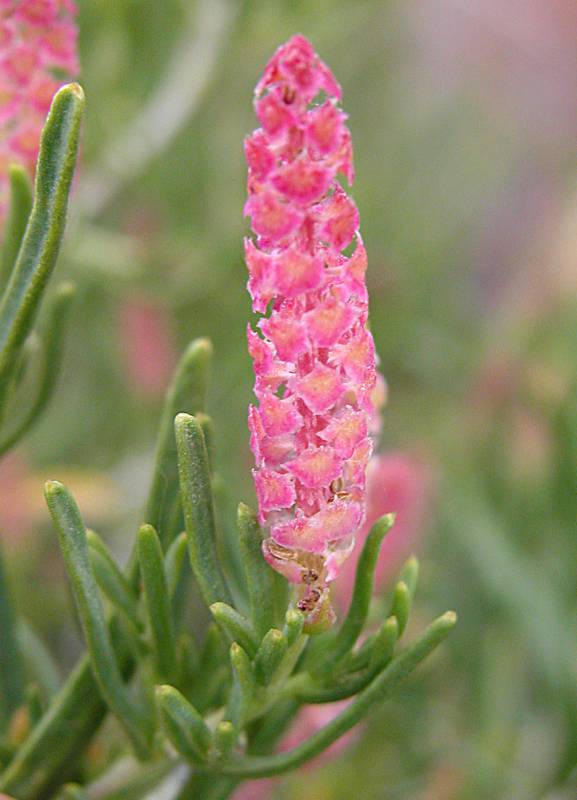Hosted by the University of Washington Herbarium, Burke Museum
Publication: Not. Milit. Reconn. 149. 1848.
Origin: Native
Herbarium search: CPNWH
Notes: FNA4: "Reports of Sarcobatus vermiculatus from British Columbia and Texas have not been verified by us. One of the most common of western North American shrubs in alkaline habitats, S. vermiculatus grows among other shrubs or in pure stands, often to great extent, especially in the Great Basin. It is frequently codominant with Allenrolfea in areas that support little else. Other, less alkali-tolerant associates may include species of Artemisia (even A. tridentata), Atriplex, Chrysothamnus, Grayia, Krascheninnikovia, Larrea, and Suaeda. Sarcobatus vermiculatus ranks among the important western browse plants, but it has a dark side. Range animals and wildlife feed on it; the plant\'s saline taste perhaps enhances its palatability. Under certain conditions, poisoning of animals, especially sheep, may result from the plant\'s content of sodium and potassium oxalates (10-22% of plant dry weight). Death may occur when sheep eat large amounts of S. vermiculatus---and little or nothing else---in a short time. A notable mass poisoning of sheep occurred in 1920 when 1700 ewes in transit were unloaded and allowed to browse in a pure stand of S. vermiculatus. The next morning 1000 were dead (J. M. Kingsbury 1964). Sarcobatus vermiculatus is allegedly a phreatophyte; its taproots are said to be able to penetrate as much as 57 feet below the surface. Large communities of greasewood coincide with areas where the water table is less than 15 feet below the surface, although the plant can survive with water table depth to 25 feet (H. N. Mozingo 1987)."
Last updated 1/27/2024 by David Giblin.

